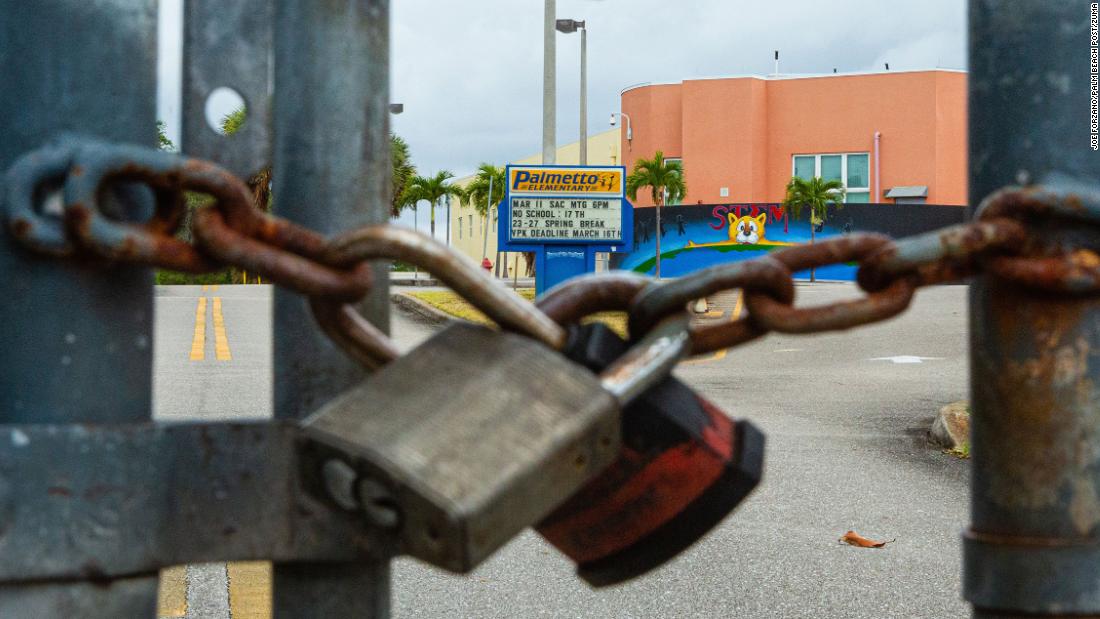[ad_1]
Then there are city, county and other local leaders who wield their own authority over parts of the pandemic response, from lockdown enforcement and remote schooling to contact tracing and public transit — sometimes at odds with the marching orders of those above them.
It’s clear America’s governments aren’t singing in the same choir.
The blame game is still being played by officials at all levels of government, but when it comes to protecting residents, who really is in charge?
“It’s the federal government whose hands are tied,” said Dr. Amesh Adalja, senior scholar with the Johns Hopkins Center for Health Security. “Local governments have that capacity. They have the best idea of what’s going on in a community. … They’re on the ground.”
A World Health Organization epidemiologist concurs, saying Wednesday that integral to reopening is knowing where the infections are, how far they’ve transmitted and whether they’re under control.
“It’s not a one-size-fits-all, and what countries need to do — and what decision-makers need to do — is to evaluate the situation in their countries at the lowest administrative level as they can to determine what can be lifted where and when,” WHO’s Dr. Maria Van Kerkhove said.
“There’s sometimes tension between the governor’s preference and the local government’s situation on the ground,” she said.
Look no further than Atlanta, where Mayor Keisha Lance Bottoms is “at a loss as to what the governor is basing this decision on” and is exploring whether she can legally institute rules for her city that conflict with Gov. Brian Kemp’s order to reopen parts of the state’s economy, she told CNN.
So, when the different levels of government are operating from different, or conflicting, playbooks, what is a city or county government to do? What can residents demand?
Quite a lot, experts say, and that may be important as some states reopen, or if Covid-19 resurges, or in the event of another novel outbreak. Here’s what they advise:
Shut down events where distancing is unlikely
Certain gatherings are more conducive to spreading a respiratory virus, and Adalja believes Miami and Austin made the right calls, he said.
“It doesn’t take a lot to understand mass gatherings like Mardi Gras are a focal point for spread,” he said.
Trace and track
This is most important at the outset of an outbreak. Optimally, a testing dragnet would be launched, but when testing faces federal approval and supply chain hurdles, delaying implementation as it did in the United States, knowledge is key, Kellar said.
The latter is especially important because those locations “become areas where when symptoms develop, they know to self-quarantine and get tested,” Kellar said.
Signs should be placed on the doors of those locations, explaining the date and time the patient tested positive, she said.
Educate
If there is one facet of pandemic response where locals face no limitations, it’s educating the public.
“We wanted to get the word out early. That’s the business we’re in,” district CEO Tom Bakaly said.
Within weeks, it began a dialogue with city, education and business leaders and started issuing advice on how residents could protect themselves.
“Worry, stress and feeling disconnected is something we know our community is experiencing, which is why we wanted to tailor or information around that,” Bakaly said.
Jump on the myths
Keeping everybody safe is the practical and common sense mission, she said, but “there’s a lot of noise, I think, that can get in the way of using that common sense,” she said.
Thomaston, Maine, and other jurisdictions across the country experienced some of that noise when residents received texts saying someone they knew had contracted Covid-19 and urged them to get tested.
Combating the myths can be a little more problematic when leaders are providing different guidance to their constituents.
“We certainly have not spoken with one voice as a nation, and that’s a challenge,” Kellar said.
Coordinate
Cities and counties, especially those where residents cross local borders for work, shopping or recreation, should form regional groups to fine tune their response and recovery. Local demographics and geography are crucial factors in determining how to combat a virus.
It’s also important to consult with state and federal partners, but as Covid-19 has shown, that’s not always possible for local leaders.
Maximize the message’s reach
Yet just like determining which businesses are essential, one size does not fit all cities, she said.
Beach Cities Health District did something that’s almost unheard of in 2020: Staffers picked up the phones. Aware it might have issues reaching its older residents, the district — which converted its entire staff to coronavirus-related tasks last month — expanded its call center and touched base with seniors to check on their health and provide them the district’s hotline number.
“It was important to us to just check in with everybody,” Bakaly said. “At a time when we’re asking people to physically distance, we want to make sure they stay connected.”
Protect the most at-risk
Though information showed coronavirus was hitting China’s elderly and smokers the hardest, it seemed less discriminate when it hit American shores, where different health factors are at play. It’s important to know which health factors most affect your community, experts says.
As for the impoverished, leaders should realize the problems inaccessible health care pose — not just during the pandemic, but historically, Kellar said. If a lack of money or insurance prevents someone from going to the doctor, she or he might not even know they have a preexisting condition that could make Covid-19 deadlier, she said.
Bolster supplies
In South Dakota, local governments in rural pockets of the state lack resources and rely heavily on state government. The state’s health systems have been good at spreading important information, but information is but one part of an effective response, said Dr. Robert Summerer, president of the South Dakota State Medical Association.
“As we prepare for a higher volume of patients, we want to make sure we have the appropriate supplies,” he said, adding that having critical care staffing in place is also important.
Make telemedicine easy
Also important for those in far-flung locales is access to doctors, a problem only exacerbated during a pandemic when medical professionals might find themselves overwhelmed.
“Telemedicine is exploding,” Summerer said. “That’s an area that we’re really going to see grow during the epidemic.”
State and federal legislation can help, he said, as there are concerns about ensuring doctors and staff are paid properly and patients’ privacy is protected, as well as licensing and record-keeping requirements.
Put the right people in charge
This one seems simple, but politics tends to muddy even the most facile of notions.
Just like an emergency manager would be handed the reins during a hurricane, someone with expertise in public health or epidemiology needs to be in charge during a pandemic — and leaders should be looking at success stories on the West Coast and abroad to determine what works and what didn’t, Kellar said.
“That health officer needs to be in charge,” Kellar said.
Local governments enjoy more public trust than do state or federal governments, she said, so they need to be careful not to betray it. Information should be straightforward, easy to digest and never sugarcoated. Don’t try to scare people, either, she said. You don’t want residents to tune out.
“The places that have done better had residents listening, and doing what needs to be done,” she said.
Set a good example
Leaders lead not just with words but with actions, whether it’s coughing into their elbows or social distancing during briefings.
“It helps when local leaders also model what needs to be done,” she said. “They wear their masks when they’re out.”



























